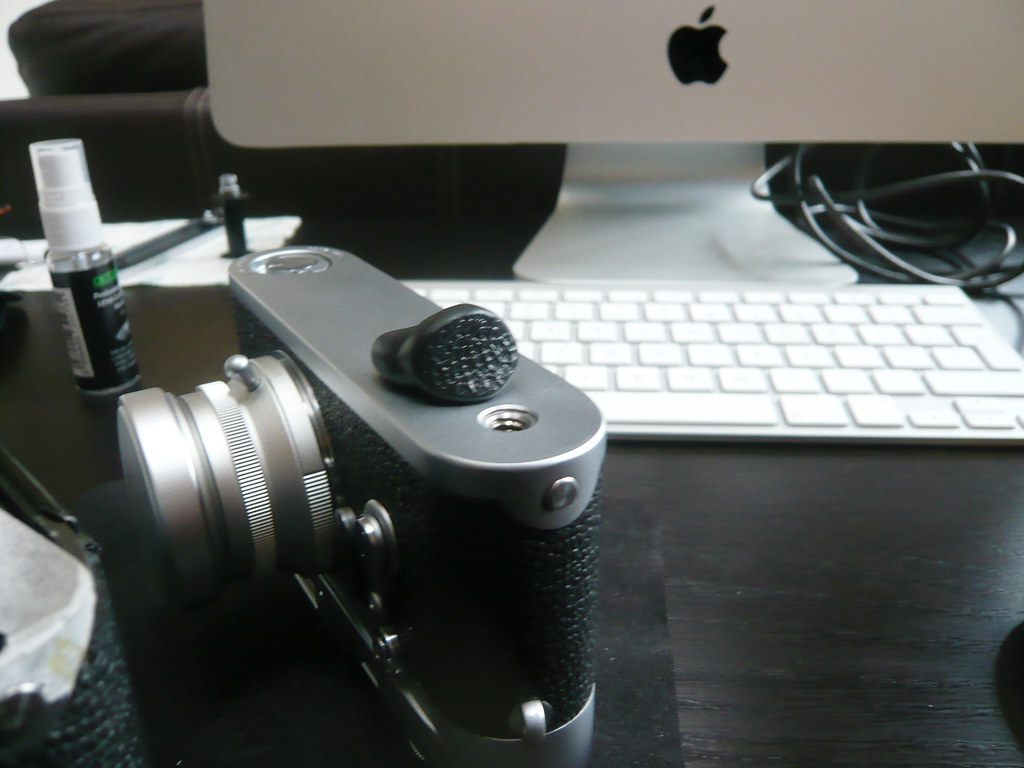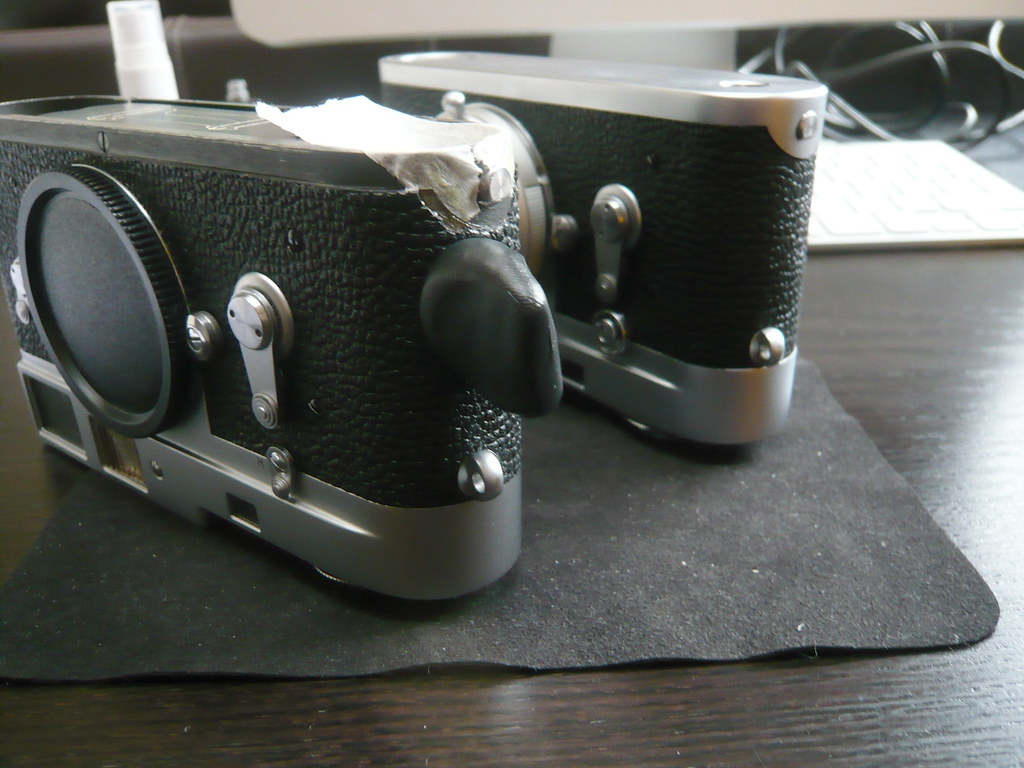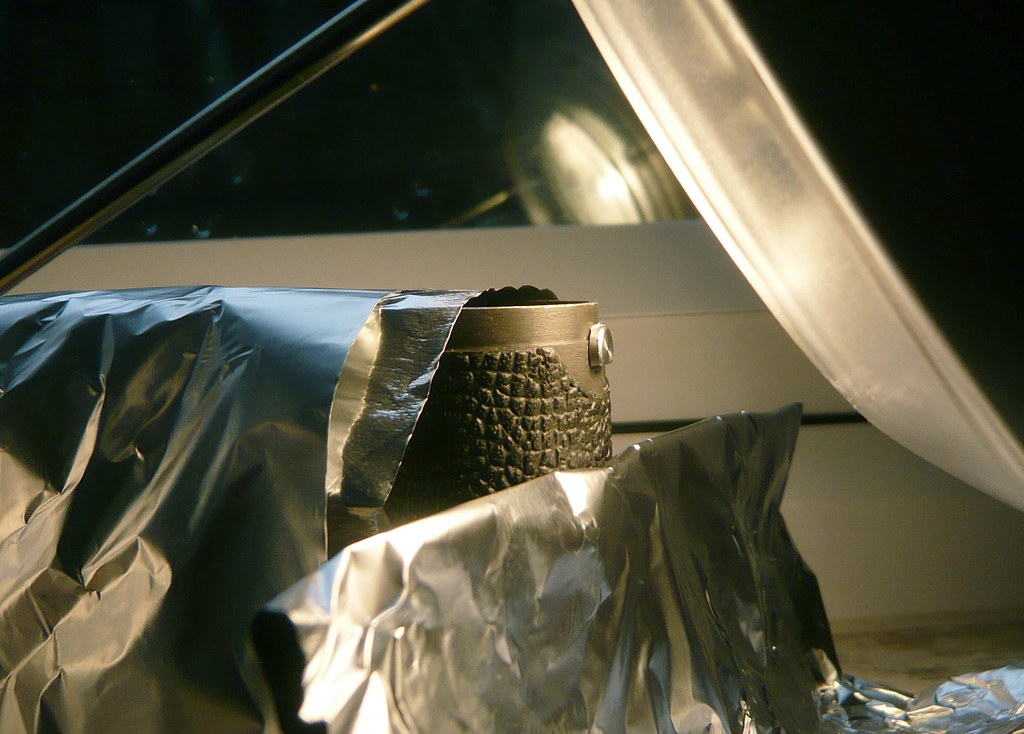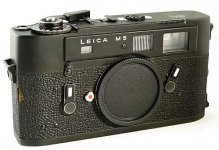Krzys
Well-known
So now the edge of what remains jabs me in the forehead when I shoot portrait orientation.
Time for some Griptac from cameraleather.
Can anyone share their experiences with stripping and resorting their M2/3's skin?
Time for some Griptac from cameraleather.
Can anyone share their experiences with stripping and resorting their M2/3's skin?
Beemermark
Mentor
http://cameraleather.com has a good description of how to remove the vulcanite. From experience I can say it's a real messy PIA.
DrLeoB
Shoot a IIIc "K" !!!
I've done 3x M3's.... VERY messy, the vulcanite seems to be harder and tougher than earlier IIIc"s. What I finally ended up with, as a tool, was a bamboo chopstick. Sharpen the square end into a wood chisel bevel and slide the edge under the vulcanite at a very low angle. Comes right off ..... in a lot of very small chips.
squirrel$$$bandit
Mentor
You're going to have to cowboy up and apply some gaffer tape to your forehead.
ItsReallyDarren
That's really me
The vulcanite is a pain to remove by chipping. It's hard as rocks and comes off in tiny tiny pieces giving hours of fun coming up with new swear words.
Using a flat blade like a box cutter helps speed up the process but not by much. Youxin mentioned his method of removing vulcanite is removing all insides of the camera leaving only the outer shell and baking it to soften the covering. If you have the tools to do this it might save you some time.
Using a flat blade like a box cutter helps speed up the process but not by much. Youxin mentioned his method of removing vulcanite is removing all insides of the camera leaving only the outer shell and baking it to soften the covering. If you have the tools to do this it might save you some time.
Roger Hicks
Mentor
Mark of honour. Leave it. This says, "I am a photographer, not a fondler."
Cheers,
R.
Cheers,
R.
gm13
Well-known
On my M5 I used a gelled paint remover of the "citrus" variety. Dabbed it on carefully with a small paintbrush so as not to get any on metal parts and let it sit for twenty minutes or so then proceeded with aforementioned sharpened chopstick. In difficult sections a 1/4" sharp wood chisel  worked like a charm. For application of Cameraleather I took their advice and used an alcohol based hand sanitizing gel, pretty easy to manage-- all ended up quite well. Took about 4hrs. 6 mos later still in perfect shape and holding.
worked like a charm. For application of Cameraleather I took their advice and used an alcohol based hand sanitizing gel, pretty easy to manage-- all ended up quite well. Took about 4hrs. 6 mos later still in perfect shape and holding.
Erik van Straten
Mentor
To remove the vulcanite one has to remove the housing from the camera. Just drop the housing into hot water and the vulcanite wille come off easily. This is however a job for a competent technician.
Erik.
Erik.
knstflx
Member
if you just want to do a quick fix to keep it from catching on something and chipping further, i recommend using liquid electrical tape. i put some on my m5 for that reason and it turned out looking much better than i thought it would.
Rob-F
Likes Leicas
Another vote for Liquid Electrical Tape. I built up some layers of it on my m2 to replace missing sections of vulcanite. It also seals down the edges of the remaining vulcanite. As a finishing touch, I put the camera in a Luigi case. Easier than recovering, and looks great! That's it, in fact, in my avatar.
maddoc
... likes film again.
It happened to my M4-P last year and after some time I got tired of sticking some black tape on the camera and decided to replace the remains of vulcanite with Griptack from cameraleather. I took some photos of the process and and wrote about it in this thread here at RFF.
It is a time-consuming procedure and you have to take lots of care if you use one of the paint stripper.
It is a time-consuming procedure and you have to take lots of care if you use one of the paint stripper.
johannielscom
Snorting silver salts
To remove the vulcanite one has to remove the housing from the camera. Just drop the housing into hot water and the vulcanite wille come off easily. This is however a job for a competent technician.
Erik.
Removing the housing can be done, I did it myself. But, I bought some specialist tools from a Chinese seller on eBay to get the housing off. Upside: you can sell these for just as much or a little less when done.
I never knew about the hot water trick, I used a pocket knife to scrape all vulcanite off the housing of my M3. It took like forever and I can confirm the bit on Johns swear word-library additions.
The Griptac I applied is brilliant.
Sparrow
Mentor
You could try this Fimo stuff, a thermal setting plastic I found in an artist suppliers

make an impression from another body, to form a die of the texture

while that's baking, prime the surface with a impact glue, the rest of my vulcanite was sound so I didn’t need to chip any more off

fill the chip with the Fimo, and apply the die

then you have to get the repair up to the setting temp of the plastic without wrecking the camera, tin-foil reflectors and heat sinks and the like, I used a halogen heat-lamp as a heat source

two years on and it’s still in place, in fact I don’t think I could tell which one it was now.

make an impression from another body, to form a die of the texture

while that's baking, prime the surface with a impact glue, the rest of my vulcanite was sound so I didn’t need to chip any more off

fill the chip with the Fimo, and apply the die

then you have to get the repair up to the setting temp of the plastic without wrecking the camera, tin-foil reflectors and heat sinks and the like, I used a halogen heat-lamp as a heat source

two years on and it’s still in place, in fact I don’t think I could tell which one it was now.
wblati
666
Nice work Sparrow! Might try this myself as I have a small piece missing on the backdoor of my M4-2
Sparrow
Mentor
the door’s even better, you can take it off and pop it in the oven to cure
I've also performed small area repairs using Loctite Silicon Black, a sealant used for car engines, oil pans and water pumps. Loctite is the brand which at the end provides the tougher finish.
knstflx
Member
Krzys
Well-known
Thanks for the contributes of information. I have just applied gaffers tape and forgotten about it 
Richard G
Mentor
Stunned by Stewart's inventive solution. I used Fimo as kid and it's very high quality stuff. The moulding of the exact pattern and then hardening with heat is a very elegant sequence. Fine result in the last picture.
kemal_mumcu
Well-known
I did a M2 a couple years back. I used a combination chipper and heavy duty paint stripper. The paint stripper melts away the vulcanite and makes it easier to remove. It was particularly good for cleaning up the residue left on the chassis. Not hard at all. Afternoon job. Would do it again in a flash.
Share:
-
This site uses cookies to help personalise content, tailor your experience and to keep you logged in if you register.
By continuing to use this site, you are consenting to our use of cookies.



